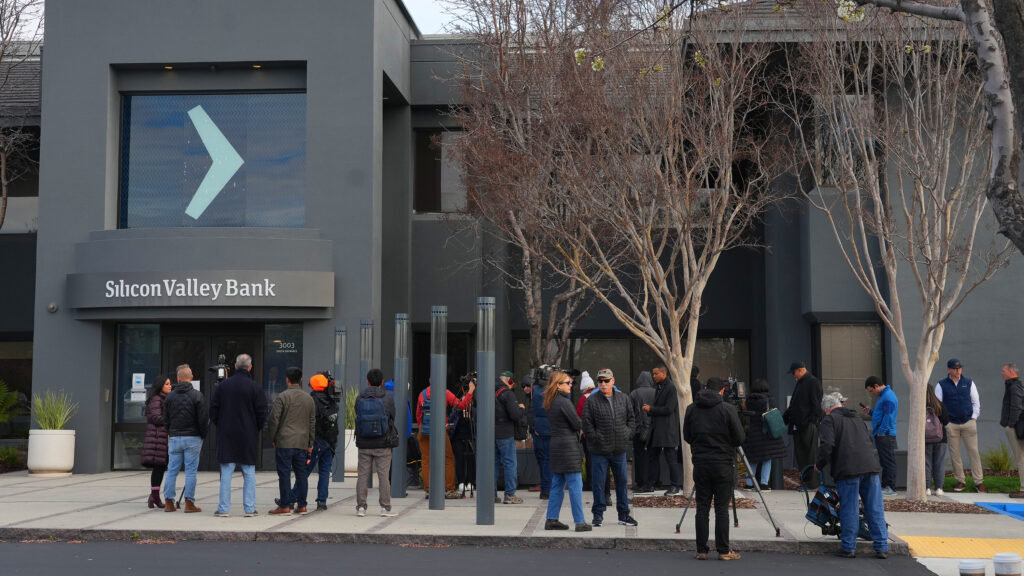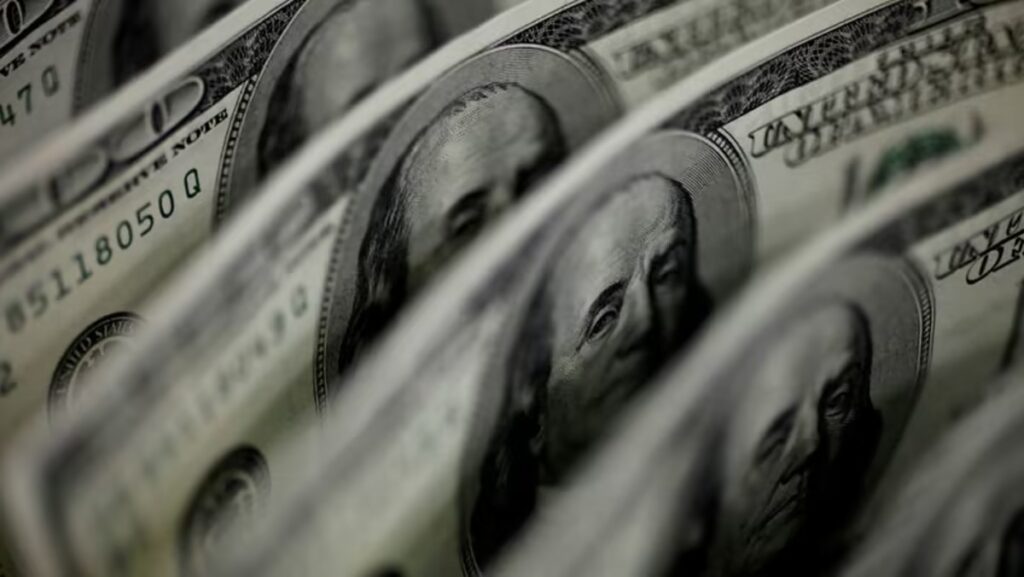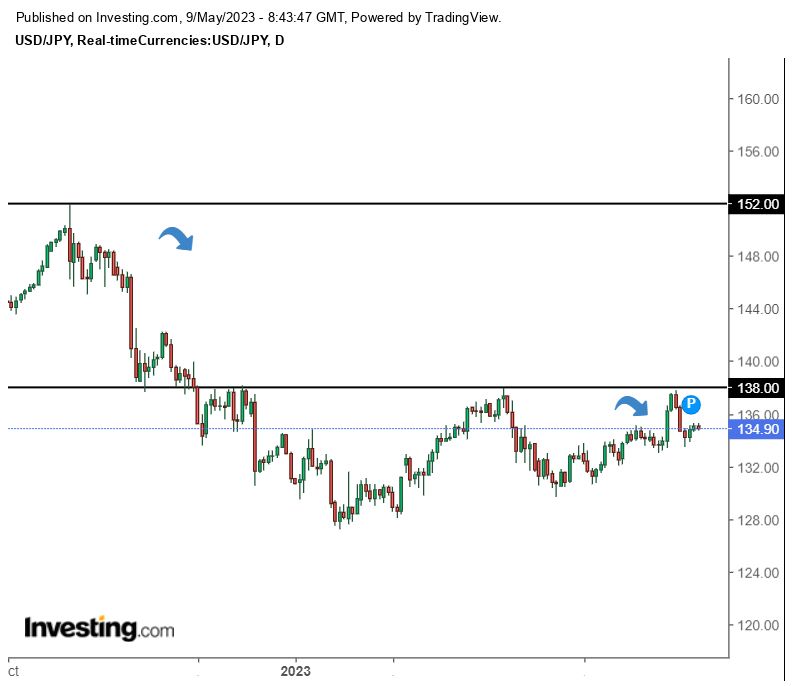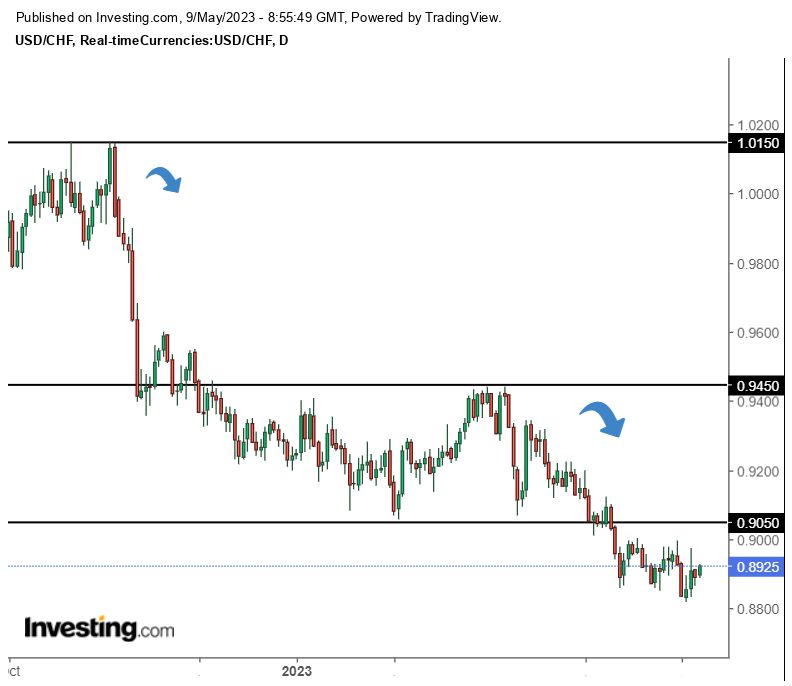
An Impending Recession?
10 min read
On the first Wednesday of May, the Federal Reserve raised interest rates yet another time at the Federal Open Market Committee meeting. However this time, the Fed officials concluded the meeting with vague signals that they might very well be done raising interest rates, at least for now. While Fed Chair Jerome Powell admitted that pausing the rate hikes was not exactly discussed during the meeting, he did reveal that the officials feel that they are in fact getting closer, “or maybe even there”.
The uncontested decision to raise interest rates again in the first week of May marked the Fed’s tenth consecutive rate increase. Such measures were taken with the intention to bring down inflation and deliver a benchmark federal-funds rate with a range between 5% and 5.25%. For the past couple of months, officials have been looking out for clear signs of an economic slowdown to justify the end of the rate hikes and the time has finally come. Mr Powell has, at long last, given the signal indicating that the current situation is now taking a turn, and officials would need to see signs of stronger-than-expected growth, hiring and inflation to continue raising rates. The Fed’s next meeting is on June 13-14.
The Current Economic Situation
Generally, the Fed fights inflation by slowing the economy through rate hikes, which tighten financial conditions like higher borrowing costs, which would then result in lower stock prices and an appreciation of the dollar. Banking stresses are also expected to further contract the economy, but the magnitude of any credit crunch is typically difficult to predict and the effects might not be evident until months later. When it comes to monetary policy, the Feds are relatively clear of the possible outcomes, but credit tightening is a different story altogether. With the series of banking crises in the recent months, banking-sector stress and credit conditions have to be a part of the calculations much more in the present situation.
The central bank skipped a rate hike in March amidst the Silicon Valley Bank (SVB) and Signature Bank meltdown, which raised concerns about a bank-funding crisis. But after the situation calmed down, we faced yet another hike this month as banking sectors broadly improved, claiming to be the supposed final round of hike. In fact, Powell reckons it is possible that “this time is really different” after raising rates for a tenth straight time. He is also of the opinion that the US economy might just be able to skirt recession, but it is quite apparent that the odds are stacked against him. With a labour market that is still hot, the Fed is likely to have to hold rates higher for longer and that doesn’t bode well for dodging an economic downturn. There are simply too many obstacles that would make such a prediction so much less convincing: a credit crunch, a debt ceiling debacle and some analysts are even bringing in the weather.
The Credit Crunch
The sudden failures of SVB and Signature Bank, coupled with the loss of market confidence in Credit Suisse, a global systemically important bank (GSIB) in Europe all appear to be evidence of the challenges posed by the interaction between the tighter monetary and financial conditions and the buildup of vulnerabilities. With the advent of newer technologies, the rate of information spread is so rapid that what may initially seem like isolated events in the US banking sector very quickly spread to banks and financial markets around the globe, causing a sell-off of risk assets. It had also resulted in a significant repricing of monetary policy rate expectations, with the magnitude and scale comparable to that of Black Monday in 1987.

The decisive actions taken by policymakers to contain the systemic threats as a result of the banking crises managed to reduce market anxiety. In order to stop further bank runs, bank authorities in the US have taken actions to guarantee uninsured deposits at the two collapsed institutions and to provide liquidity through a new Bank Term Funding Program. Credit Suisse received emergency liquidity support from the Swiss National Bank in Switzerland, which was followed by a state-sponsored purchase by UBS. But as investors reevaluate the underlying stability of the financial system, market sentiment is still fragile and tensions are still visible across a variety of institutions and industries.
Market participants and policymakers must decide whether these recent events are a sign of future systemic stress that will test the robustness of the global financial system or whether they are merely an isolated occurrence brought on by tighter monetary and financial conditions following more than a decade of abundant liquidity. The financial system has indeed become more resilient overall, as a result of the regulatory changes made since the global financial crisis particularly at the largest banks. However, concerns remain regarding vulnerabilities that may exist at both banks and nonbank financial intermediaries (NBFIs).
The financial sell-off in the US was caused by investors’ worries about losses on interest rate-sensitive assets, particularly for banks with concentrated deposit bases and significant mark-to-market losses. In Europe, banks that trade at considerable discounts to their book values and have long-term worries about profitability and their capacity to raise capital were most affected.
Shifting patterns of deposits across different institutions could also raise funding costs for banks, which could restrict their ability to provide credit to the economy. With the recent fall in bank equity prices, lending capacity of US banks could decline by almost 1% in the coming year, reducing real GDP by 44 basis points, all else being equal.
Failures of banks exacerbate how much credit is restricted by increasing interest rates. Lending criteria were tightening even last year and this trend will only intensify following the SVB incident. One reason to place the slump in the second half of the year is that lending slowdowns typically occur with a lag when banks become cautious.

Moreover, banking sector strains have a propensity to escalate. As the epidemic has spread, early assurances that SVB was an extreme anomaly increasingly appear to be off the mark. In terms of total assets, bank failures in 2023 are already comparable to those in 2008. At his press conference, Powell called the resolution of First Republic, when it was taken over by JPMorgan Chase & Co recently, an important step toward drawing the line. However, volatility shares of other regional lenders since then seem to suggest otherwise.
Debt Ceiling Deadlock
To make matters worse, a protracted debt ceiling debate will make it much harder for the Fed to evaluate the effects of the turbulence in the banking industry, which is already leading to tighter credit conditions.
Since January, when the US Treasury reached the current statutory limit of $31.4 trillion, it has been trying all means and ways to avoid a default. In fact, US lawmakers received a direct warning on the first day of May from Treasury Secretary Janet Yellen: the Treasury Department’s capacity to use unique accounting methods to stay inside the debt ceiling may be exhausted as early as the beginning of June.
As of Wednesday this week, President Joe Biden and congressional Republicans made little progress in avoiding a first-ever US default, but did commit to negotiations on spending that would increase the possibility of a favourable agreement. There has been a lot of posturing, politics and game-playing over the couple of days and weeks, and this will likely go on for a while. Prior to June 1, the “deadline” stated by Yellen, the intensified negotiations can at least temporarily calm the markets. A violation of the debt ceiling, according to economists, would cause market turbulence, raise lending rates and result in the loss of tens of thousands of jobs. Essentially, in a best-case scenario, there will be a period of elevated market stress ahead of the deal. In the worst, the US economy would experience an economic apocalypse and the world financial system would plunge into chaos if there was a default.
El Niño
So what’s the deal with the weather that some analysts are factoring in when it comes to predicting the likelihood of inflation? The possibility of an extreme weather system forming within the current quarter of the year is projected by the National Oceanic and Atmospheric Administration to be 62% increasing to 80% by the fall. Several predictions anticipate a strong El Niño to possibly add to inflation. In such a scenario, California and the South are battered by storms and floods, which reduces the production of food and energy. Harvests have been affected globally by drought in areas of Asia by heavy rain in South America and Africa.

Strong El Ninos, according to the International Monetary Fund (IMF), can increase commodity price inflation by 4 percentage points. When you include it, the possibility of a Fed rate cut goes from being modest to almost nonexistent if the situation persists.
Other Possible Outcomes
Of course, a soft landing is possible, and there are some encouraging signals. Christopher Wallner, the governor of the Federal Reserve, stated in July 2022 that a change in the labour market, with vacancies falling but unemployment remaining level, might result in a disinflation that is relatively painless. Since then, vacancies have indeed decreased, although unemployment rates have stayed low, so perhaps a soft landing is one of the possible outcome.
There are also other possible outcomes speculated by analysts, one of which is a “rolling recession” where one industry after another takes a hit, but the economy as a whole basically does not shrink. The fact that manufacturing and real estate bottom out before any serious slowdown in the labour markets actually provides some evidence that this is indeed what is happening.
Economic growth is likely to be sluggish in the coming months, and this would imply that we might be facing some hardship in some form or another, but that also means an outright recession is possibly avoided. In any case, it’s a challenging task to make either a soft landing or rolling recession the base case. Such scenarios would only serve as best-case scenarios.
According to the most recent results from Bloomberg Economics’ recession likelihood model, a dip starting by July is all but guaranteed. If the past several years have taught us anything, it’s that nothing is definite, so take that with a grain of salt. But the fundamental argument that a recession is more likely than not remains valid.
Powell’s upbeat outlook will suffer as a result. Even worse, a brief recession might not be sufficient to return inflation to the desired range. In the past, downturns have typically only reduced core inflation by a modest amount and with large lags. With the economy contracting and inflation still excessively high at present, stagflation appears to be a probable outcome.
A Trader’s View
Can currency be an indicator for recession? Well, let’s find out! As we all know, the US is one of the biggest economies in the world. Therefore, whenever the US makes a big move, the rest have a tendency to follow and/or be impacted by it.
We will take a look at the USD/JPY chart below to see if we can fish out anything.

As we can see, the USD has been weakening against the JPY since last October. It managed to climb back up from 128 and hit a pit stop at 138. 138 is a very strong resistance, and as you can see, it is already making its way down when it hits 138.
The majority of the world’s banks have been raising interest rates amid high inflation, but not Japan. And based on economics, raising of interest rates should strengthen the currency itself. However, USD did not really strengthen against JPY! So what it tells me is that the US economy is slowing down. And it is somewhat a tell-tale sign that recession may be coming.
To confirm my deduction, let’s take a look at another currency pair, which is USD/CHF.

I do not have to write much, you can see it for yourself. It has already broken the major support at 0.905, and 0.905 is now acting as a resistance.
We can conclude that the weakening of the USD is a sign that the US economy is slowing down, and recession could probably really be coming.
Aaron

















